Technical Information
The Energy-Saving House (NPH) integrates innovation and traditional knowledge to create a comfortable, energy-efficient, and environmentally friendly living space. Let’s explore the technical mechanisms behind the NPH house.
How does the NPH system affect the external and internal temperatures of the house?
To measure the temperature of the NPH house at various times of the day under different scenarios, including:
This research test was conducted on a newly built house in Sa Kaeo province with a 3-component NPH system (no ceiling convection). The project owner allowed the installation of testing equipment from November 26-27, 2024, at the Double A project in Wang Nam Yen, Sa Kaeo Province.
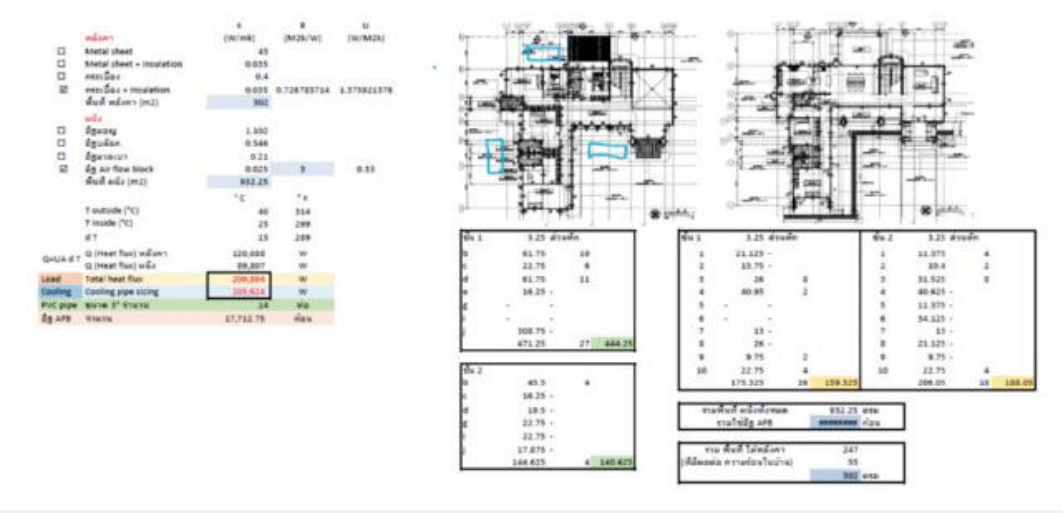
3. Install the Underground Cooling System as calculated.
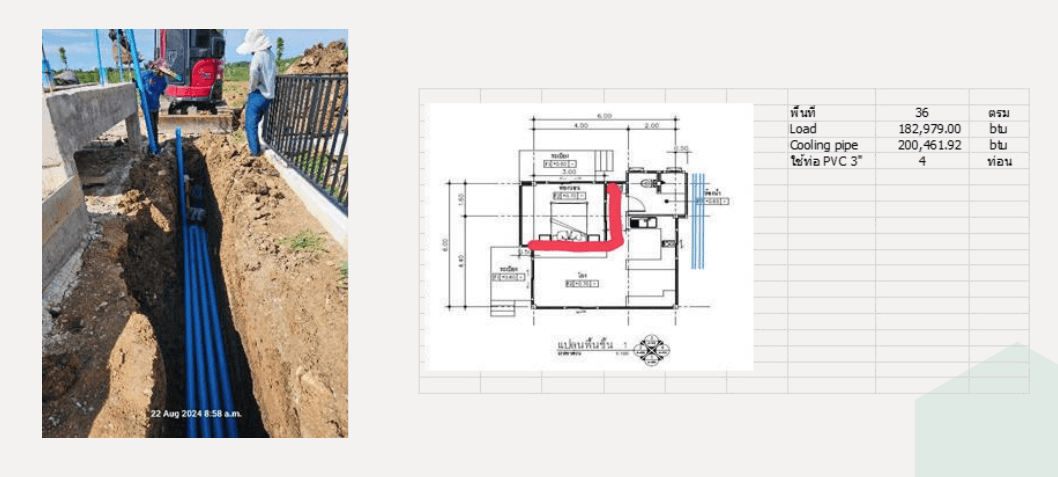
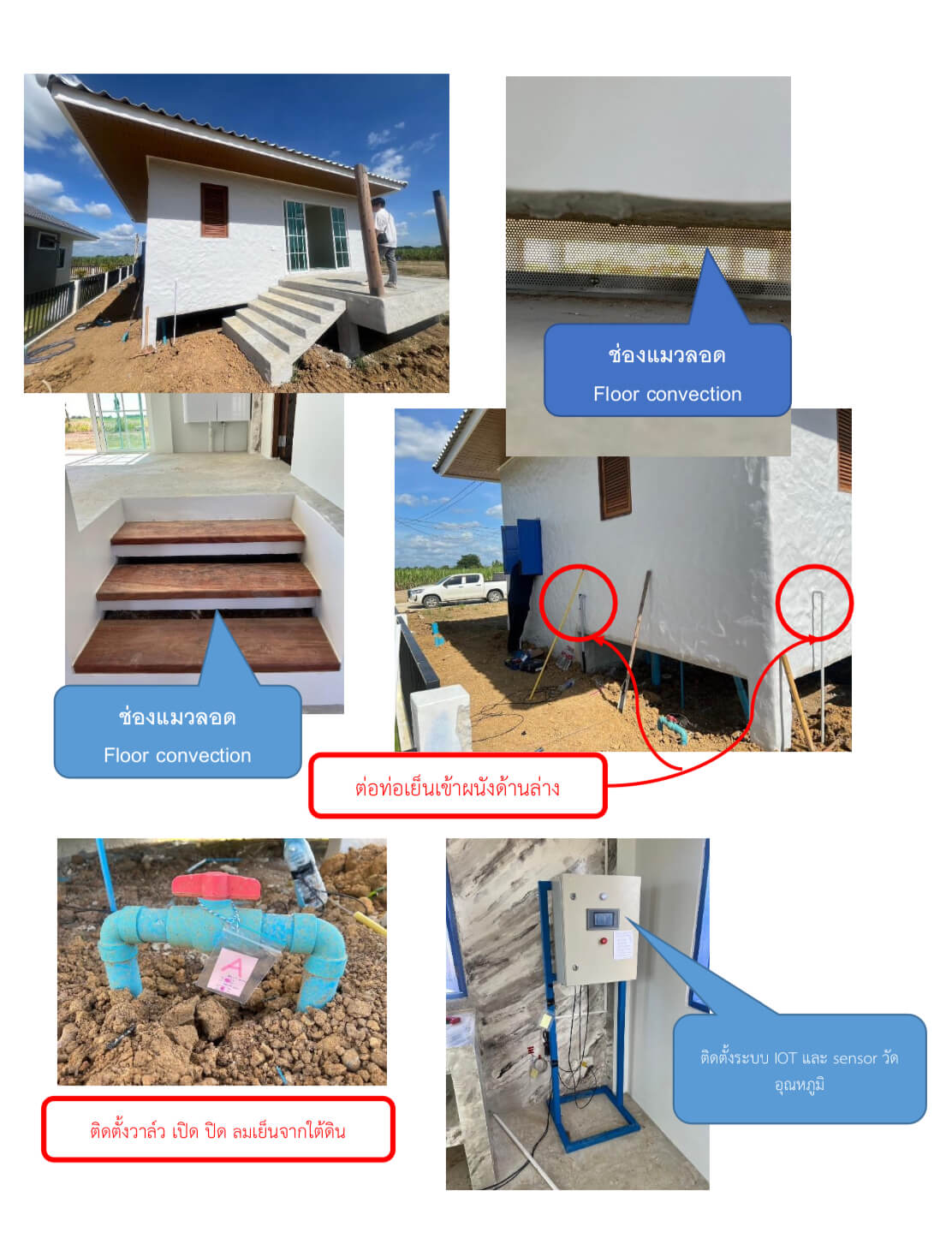
4. Install the air cooling pipe system at the bottom of the AFB walls.
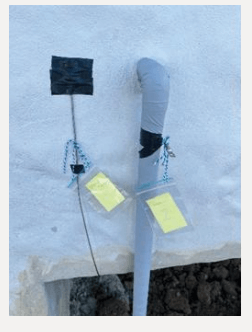
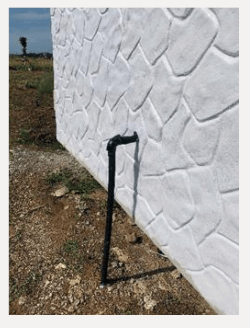
5. Install temperature sensors at various points to measure the temperature and record data through the IoT (Internet of Things) system, reading real-time data every 5 minutes for further analysis.
Sensor Installation Positions
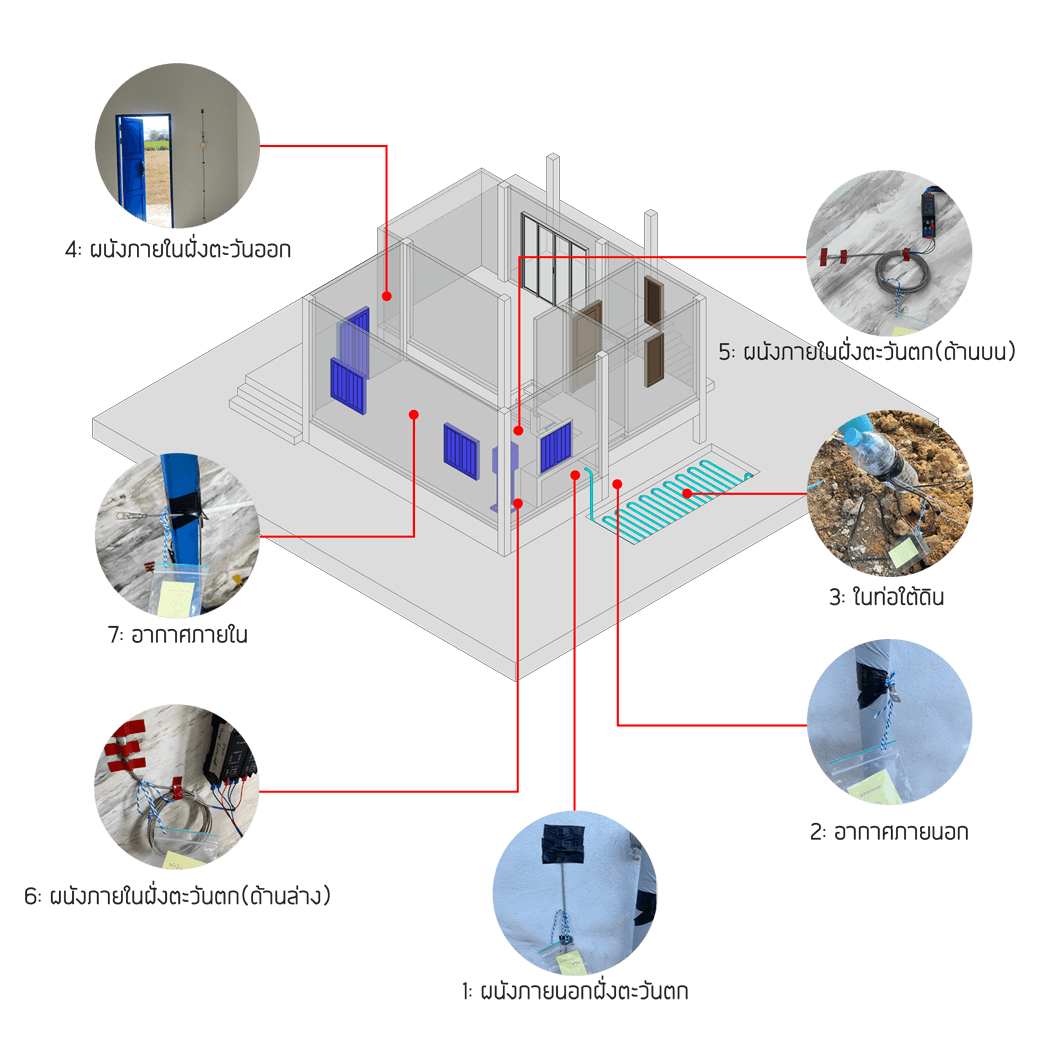
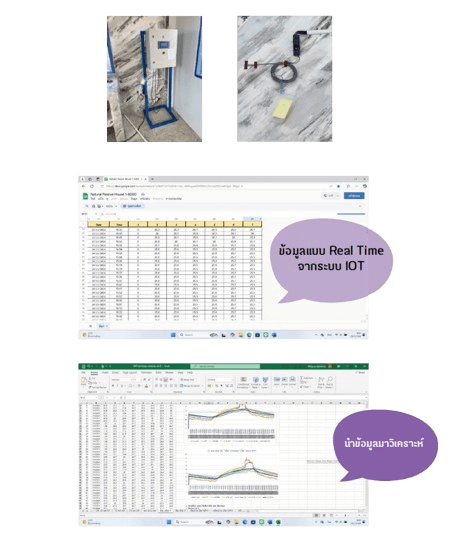
Test 1 The “ON” and “OFF” tests of the NPH system.
Test 2 Whether the NPH system can induce cool air from the underground pipe system.
Test 3 “OFF” house “OFF” NPH system <> “ON” house “ON” NPH system.
Test 4 Comparing the temperature in the middle of the house between the ON and OFF NPH systems.
Test 5 Testing the NPH system ON and OFF for 5 consecutive days.
Test 6 The performance of air expansion according to scientific principles.
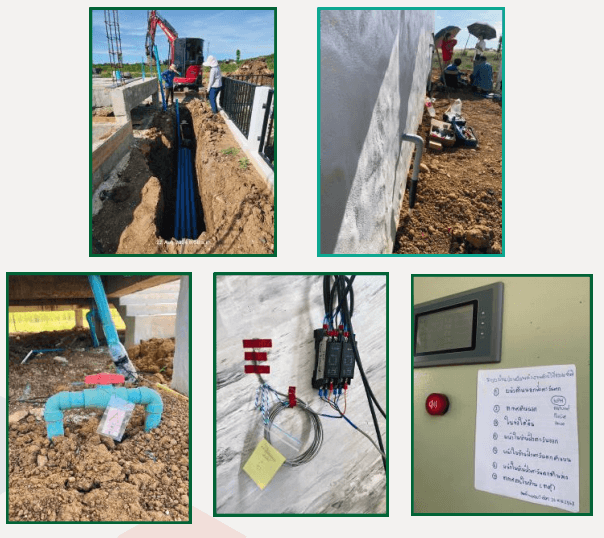

Summary: In the open and closed house situation, opening the NPH system worked better than closing it. It resulted in better temperature management within the house, with a 30% improvement, and reduced the hours the house temperature exceeded 30°C by more than 2 times.
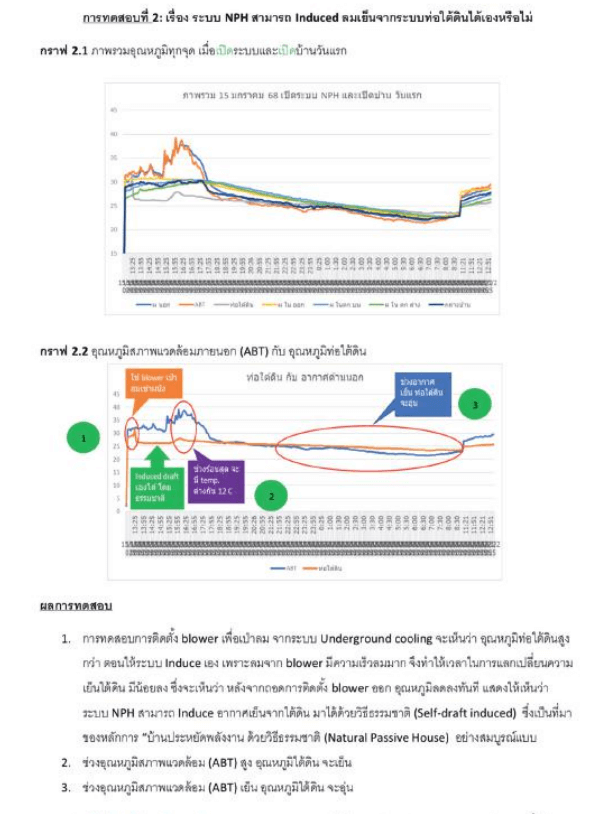
Summary: The self-draft induced by the NPH system worked efficiently according to the hypothesis. The underground temperature could be used to adjust the temperature of the walls effectively.

Summary: Opening the NPH system is more effective in reducing the temperature inside the house compared to closing the system. This allows the house to stay cool and comfortable for a longer period than when the system is off.
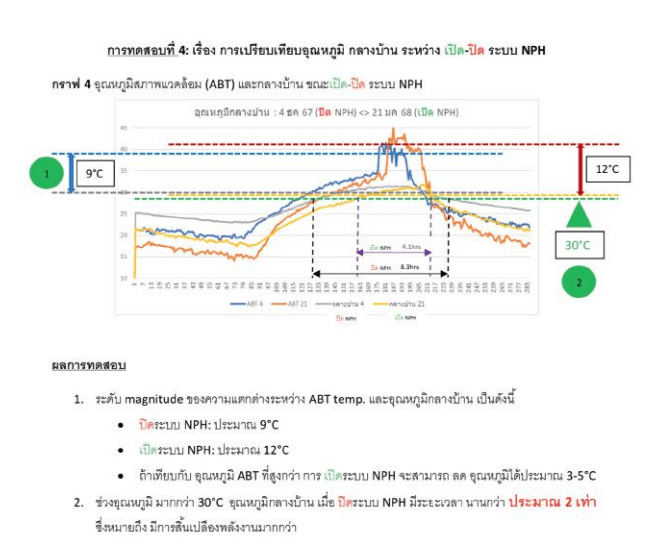
Summary: Opening the house and the NPH system provides the most efficient cooling for the house.
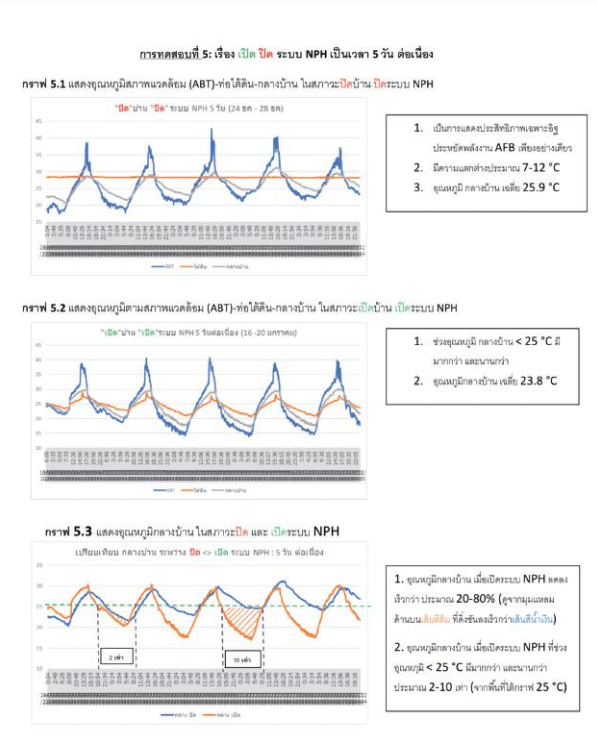
Summary: Opening the NPH system reduces the temperature inside the house by about 25% compared to when the system is off. It also keeps the temperature lower for approximately twice the time, resulting in significant energy savings.
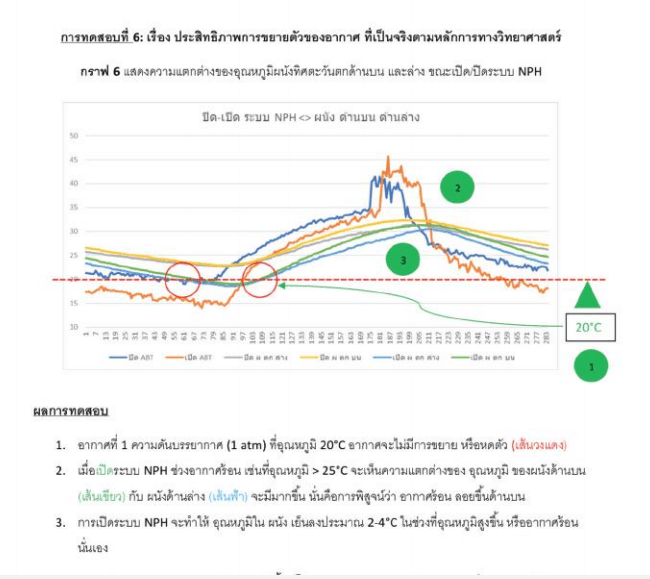
Summary: The air expansion principle caused the buoyant pressure to rise as expected scientifically. By opening the NPH system, the temperature of the walls was reduced by 2-4°C, making the house cooler and more energy-efficient.
The innovation of energy-saving Air Flow Blocks (AFB) combined with natural passive house techniques (NPH) helps to reduce the temperature inside the house and maintains a comfortable temperature for a longer period. Energy savings are increased by about 20-30%. If both AFB energy-saving bricks and NPH houses are widely used, energy consumption could be reduced by approximately 1,700 – 2,400 million baht per year.
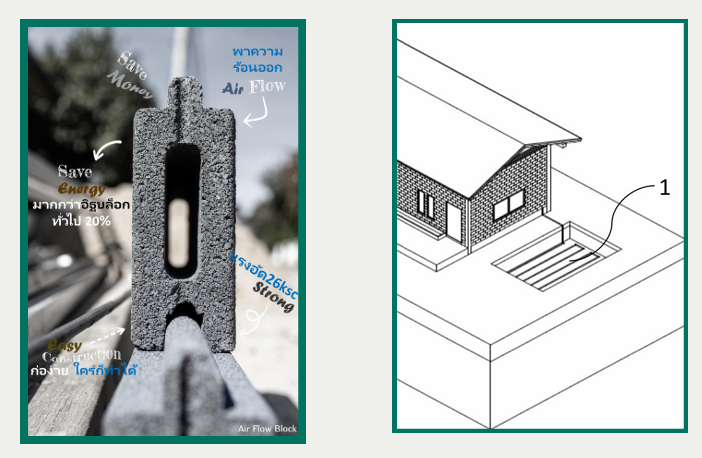
First, let’s understand the correct concept of energy saving for houses or buildings. Generally, the understanding of energy saving for a “house” refers to the energy savings of “bricks” and depends only on the properties, K (Thermal conductivity), R (Thermal resistance), and U (Heat coefficient) values. This is a common misconception (X), as these conditions apply only to the specific materials used for the “brick” or “wall” in question.
When it comes to protecting the temperature within a house or building, it’s necessary to consider the “function” of the materials as well. Energy saving for a “house” must take into account the following factors:
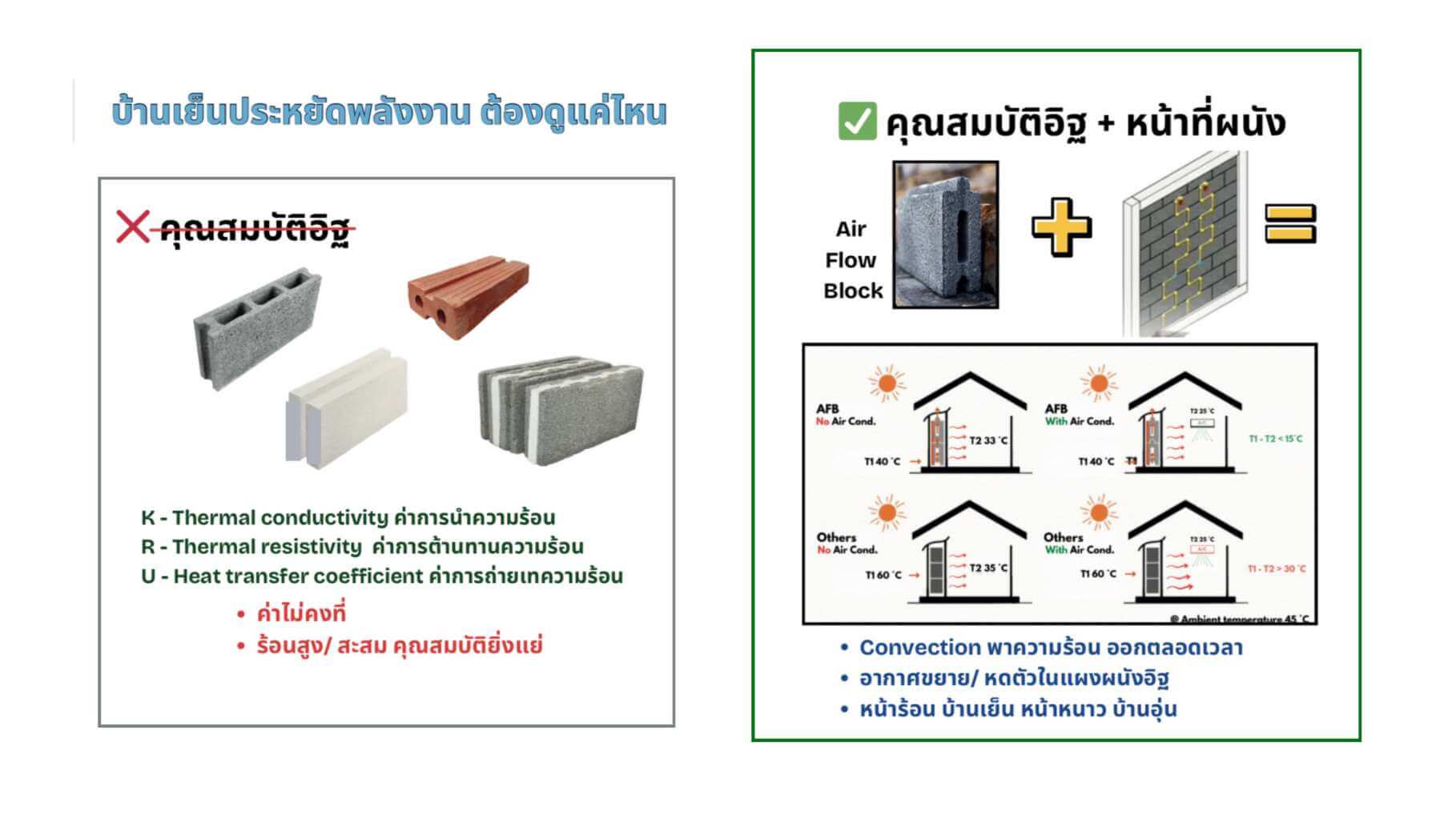
Evaluation based on “Characteristics” assesses the material’s ability as an “insulator”, which shows how easily or difficultly heat can pass through the material used in bricks or walls. This characteristic can immediately tell us which material can better protect against heat entering the house. However, it does not tell us about the energy saving of the house or building.
Evaluation based on the “Function” looks at how the materials, in the form of walls, contribute to the protection from heat within the house or building. The factors that impact this are as follows:
2.1 The “Heat Accumulation” of the brick or wall. This is determined by the equation Heat flux Q = KA (T1-T2)/L, where K (Thermal conductivity), A (Area), T1-T2 (temperature difference), and L (Thickness) are factors. From this, we can see that heat accumulation depends on the value of (T1-T2) in two cases:
Case 1: When there is no air conditioning and the temperature “decreases” during the “evening” period, the temperature difference on both sides is “small,” causing the heat accumulated within the brick or wall to stay for a longer period. The higher the insulation value of the brick, the longer it holds heat, thus making the house cooler slowly. Alternatively, if the air conditioning is turned on, it will require more energy than usual, as seen in Case 2.
Case 2: When there is air conditioning in a “hot” environment, such as the afternoon, the temperature difference between the inside and outside will be “high” (for example, room temperature around 45°C, and the outside wall surface temperature is around 50-55°C). When compared to the air conditioning temperature of 25°C, the value of (T1-T2) is high, around 25-30°C. This causes the heat flux from outside to easily pass through the wall, meaning the air conditioning will need to use more energy than normal.
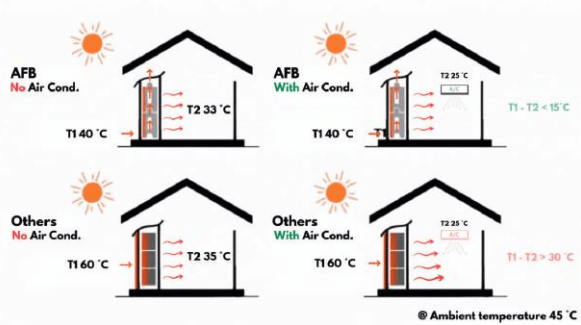
2.2 Heat dissipation when not at home. This happens when we leave the house and “close” all windows and doors, causing heat to accumulate inside. If the air conditioning is turned on later, it will consume more energy than usual.
2.3 When heat increases and accumulates more, the material’s insulation properties (K, R, and U values) will degrade from scientific principles, as these values are “not constant” and worsen as the temperature increases and heat accumulates more.
Why does Air Flow Block energy-saving brick and Natural Passive House (NPH) design work more effectively in combining both “Characteristics” and “Function” compared to other types of bricks and walls? The reasons are as follows:
1. It uses the principle of heat convection, allowing the material’s characteristics to stay close to its original values since it continuously dissipates heat when the temperature is higher than 20°C. This principle also contributes to energy savings in the following ways:
2. The convection principle works inversely to bricks that rely on insulation properties. As temperature increases, insulation-based bricks store more heat and their efficiency decreases. However, for AFB bricks, the hotter it gets, the more pressure builds up, which helps dissipate heat more efficiently.
3. Since AFB bricks are not made from insulating materials, they dissipate heat faster and more efficiently than bricks made from insulating materials. This is especially beneficial in the evening when temperatures drop. Walls made from AFB bricks release heat faster than insulating material bricks (according to tests, AFB bricks are 4 hours faster than lightweight bricks).
All the above points summarize the energy-saving aspects, but there are many other benefits as well, such as soundproofing, low water absorption (only 10%), strength, anchoring, cost reduction, and more.
Energy saving evaluation from the use of Air Flow Block energy-saving bricks and Natural Passive House (NPH) is based on the following data and assumptions:
To simplify, electricity savings of 25% from air conditioning costs are estimated. Therefore, this would save approximately 900 Baht per month on electricity for air conditioning.
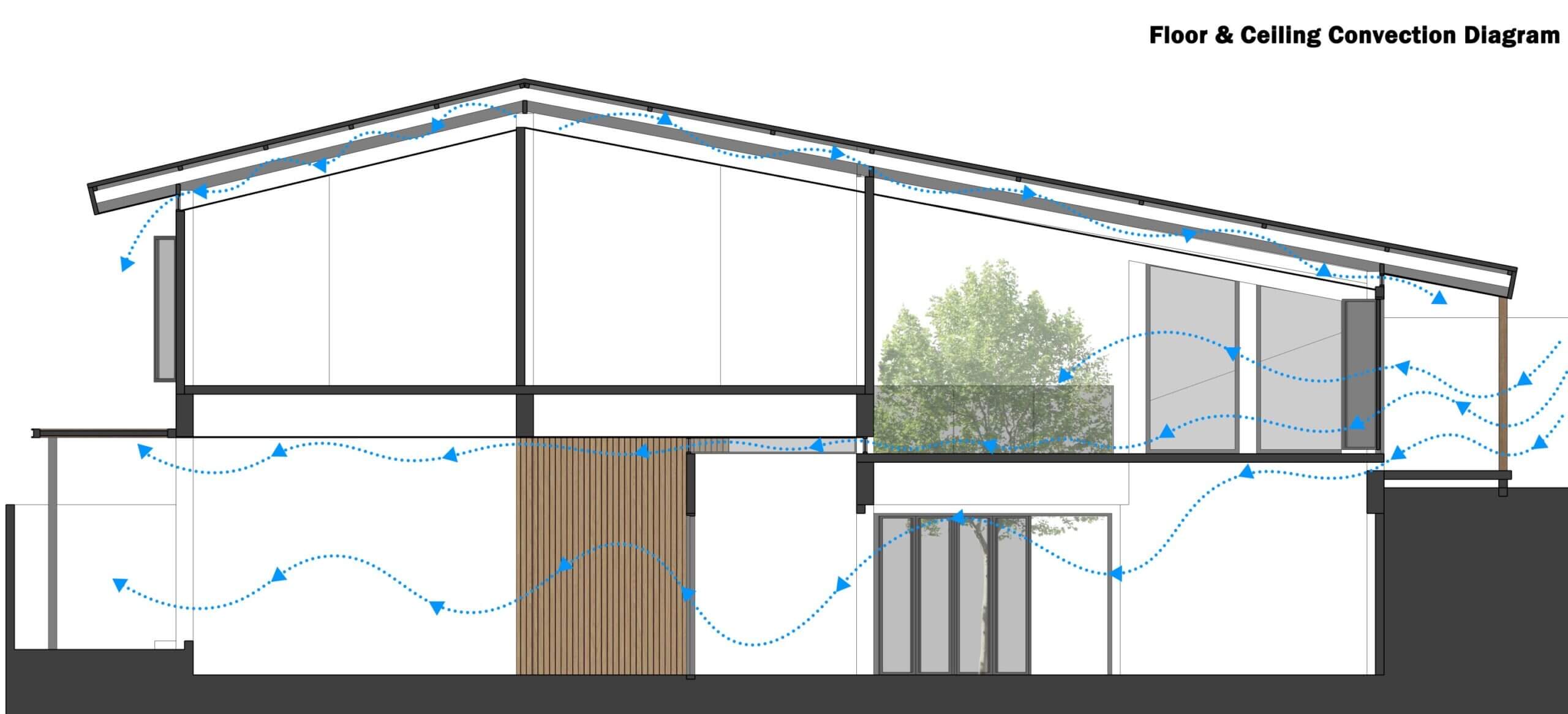
Total: 23,000 Baht per house
It can be seen that this system does not involve “additional investment or costs” in constructing a house or building by using Air Flow Block Energy-saving Bricks, but instead reduces costs by approximately 30,000 Baht per house. Additionally, the investment in implementing the Natural Passive House system is only 23,000 Baht per house, which is still lower than the cost reduction from using Air Flow Block Energy-saving Bricks.
This evaluation, therefore, cannot measure investment indices such as IRR (Internal Rate of Return), NPV (Net Present Value), or ROI (Return on Investment).
In conclusion, this evaluation is an assessment of the use of innovation with no additional investment but benefits only from energy savings.
Since the NPH energy-saving house is considered an innovation with no additional investment, and with reduced costs, it allows those with low to medium income to easily access the cool, energy-saving house innovation, especially for buildings no taller than three stories. Additionally, the production of Air Flow Block energy-saving bricks is a small-scale investment (SME), which facilitates wider investment distribution. The application of this innovation can be expanded to various building types, such as: